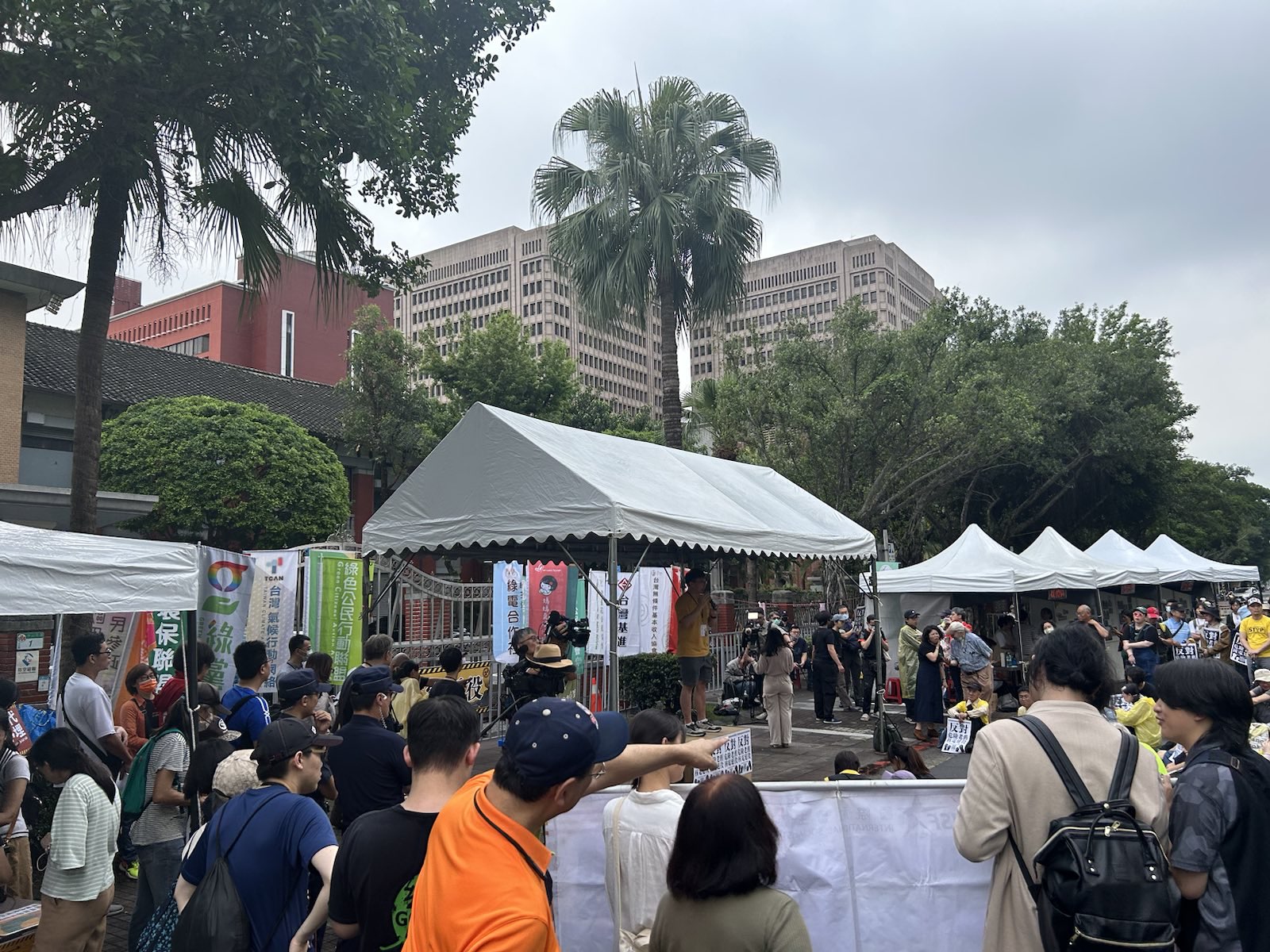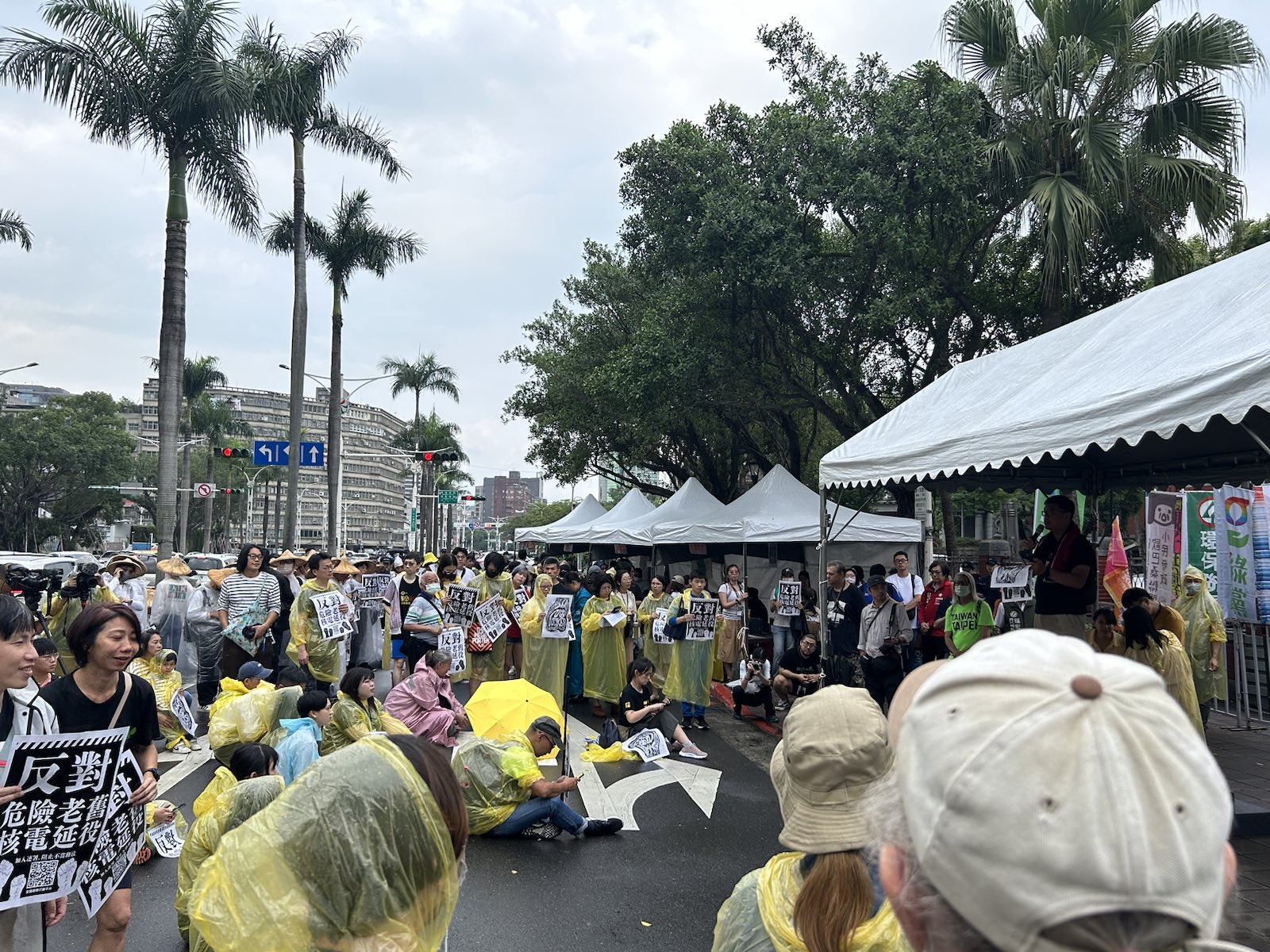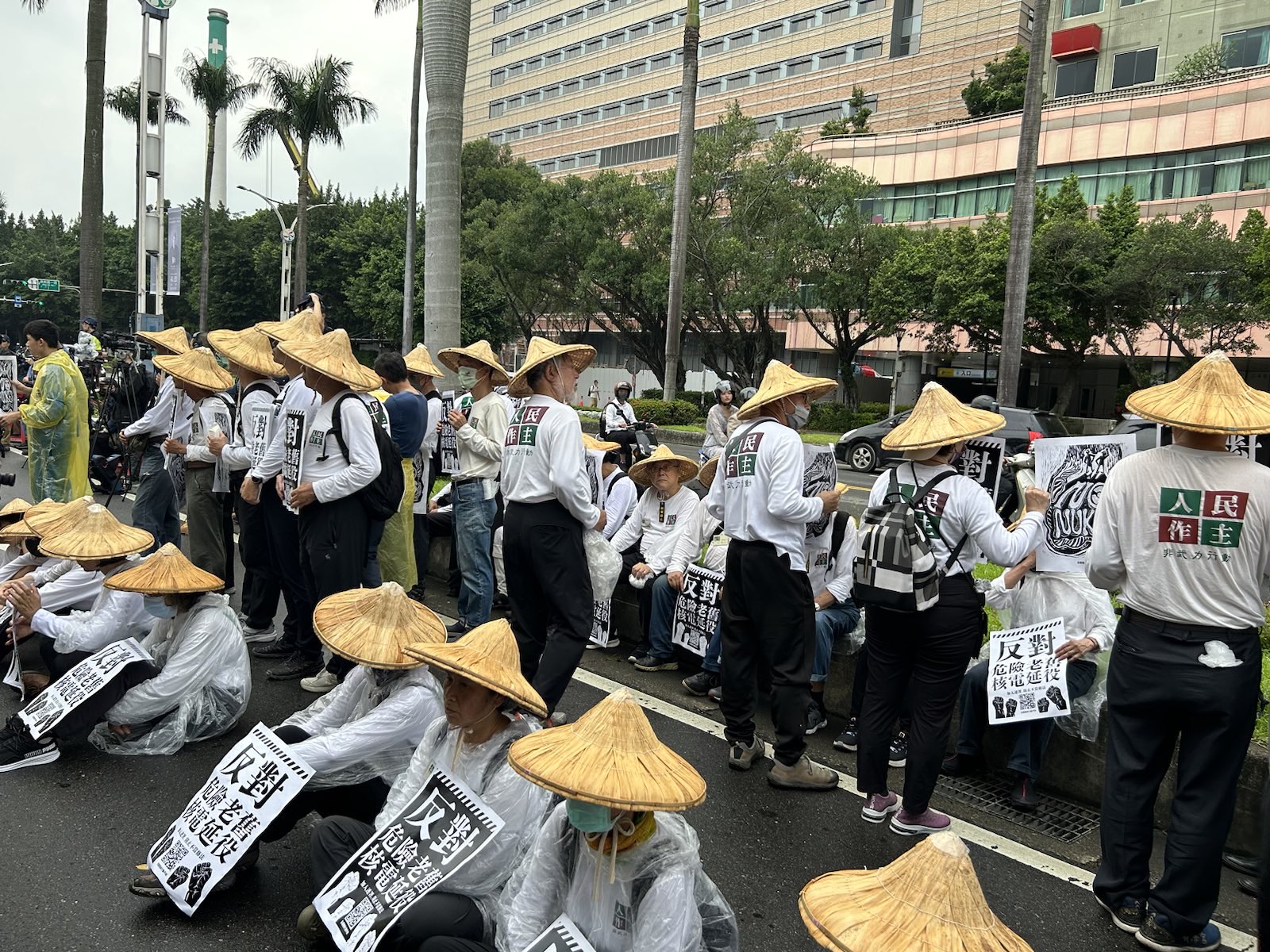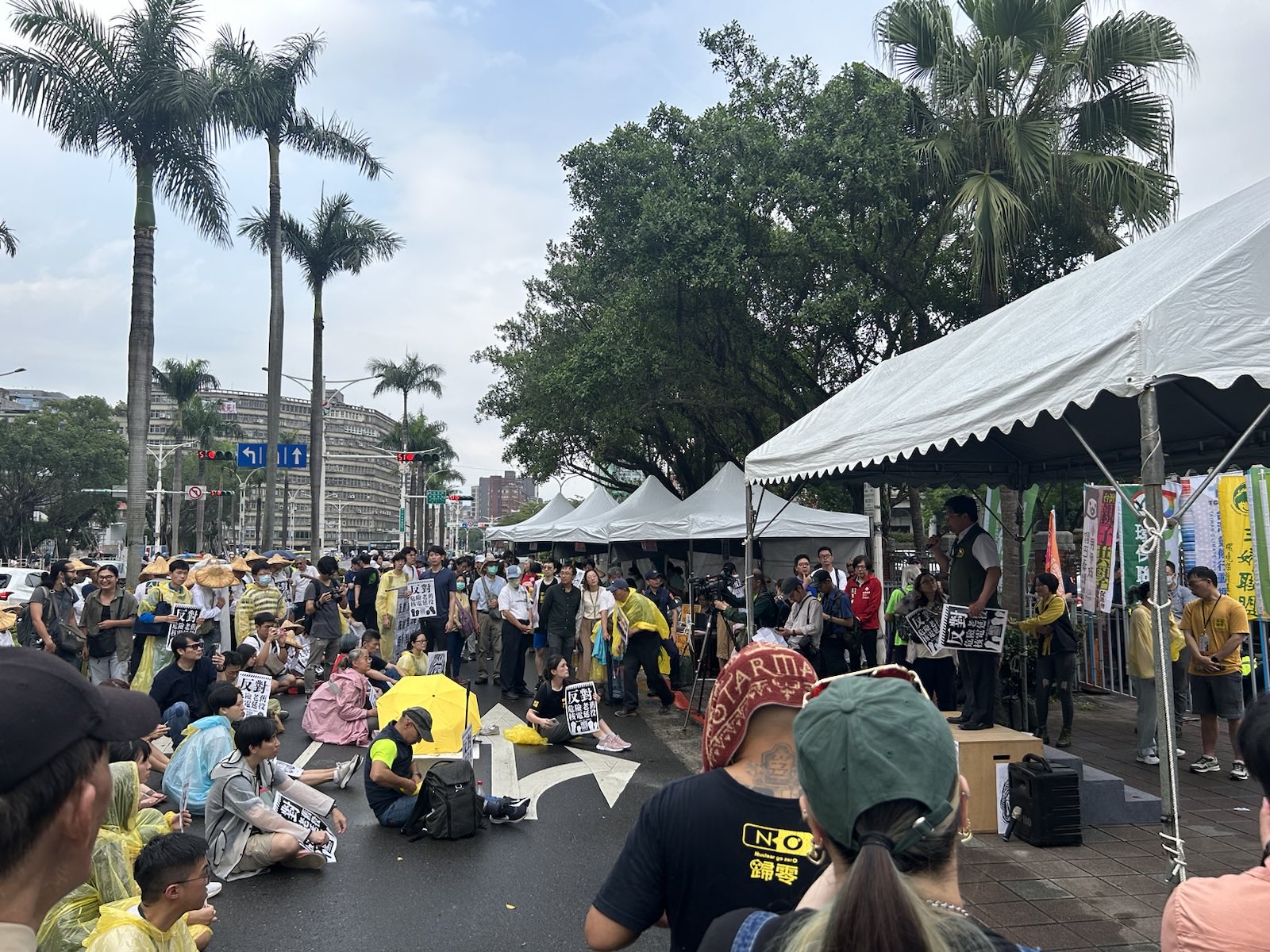by Brian Hioe
語言:
English
Photo Credit: Brian Hioe
CIVIL SOCIETY GROUPS demonstrated in front of the Legislative Yuan this afternoon, in spite of periodic bouts of rain, as a protest against nuclear energy.
The demonstration was to commemorate the tenth anniversary of the street occupation against nuclear energy that took place on April 27th, 2014. The street occupation was one of the events that took place in the aftermath of the Sunflower Movement, the monthlong occupation of the Taiwanese legislature from March 18th to April 10th of that year in protest of a trade agreement that the then-ruling KMT hoped to sign with China.
 Photo credit: Brian Hioe
Photo credit: Brian Hioe
Although the movement was not specifically focused on nuclear energy, there was the concern that after the withdrawal from the legislature on April 10th, the vast momentum of the movement might be dissipated. Consequently, former DPP chair Lin Yi-hsiung began a hunger strike on April 22nd against nuclear energy, to try and channel the momentum of the movement toward the cause of opposition to nuclear energy. Lin’s hunger strike lasted eight days.
Part of the reason why Lin’s hunger strike provoked such strong emotions at the time was because his mother and two daughters were killed by individuals thought to be state security forces during the White Terror, making him a symbol of when the KMT targeted activists with deadly retribution in authoritarian times. The KMT’s refusal to budge in the face of Lin’s demand to shutter the long-controversial Gongliao Reactor No. 4 was sufficiently angering of society that spontaneous protests broke out when he began his hunger strike and daily rallies in support of him were held during this period. This culminated in 50,000 taking to Zhongxiao West Road in front of Taipei Main Station on April 27th.
 Photo credit: Brian Hioe
Photo credit: Brian Hioe
When some occupiers refused to clear out overnight, 3,000 police officers were mobilized to clear them. Water cannons were fired, similar to the use of water cannons against those that refused to go along with the withdrawal from the legislature on April 10th. This series of events is remembered as another major instance of police violence in the wake of the Sunflower Movement.
Participant groups today included environmental groups such as the Green Citizens Action Alliance and Taiwan Environmental Information Association, as well as civil society stalwarts such as the Taiwan Association for Human Rights and Parents Participating in Education. Members of Lin Yi-hsiung’s People Rule Volunteer Group were present. Political parties ranging from the DPP, to Third Force parties such as the NPP, TSP, Green Party, and Obasan Alliance were also present.
Shortly before 4 PM, the participants of the demonstration lay on the street to signify the reclaiming of the streets as occurred ten years prior. A small exhibition of photos of the police violence in 2014 was also set up.
 Photo credit: Brian Hioe
Photo credit: Brian Hioe
Speakers touched on a range of subjects. Some directly pertained to nuclear power, in that the KMT was criticized for uncritical advocacy of nuclear energy with little consideration of where to store nuclear waste, as well the potentially catastrophic impact that Taiwan would see if seismic activity led to a nuclear disaster along the lines of the 2011 Fukushima incident. The KMT was also criticized for the means by which its push for nuclear has often disregarded democratic pushback or lacked transparency, in line with the authoritarian history of the party.
To this extent, the police violence of ten years ago when protesters were cleared out from Zhongxiao West Road on the night of April 27th and in the early morning hours of April 28th was criticized, in that there has not been such accountability for the actions of police in the decade since. The institution of the police was criticized as still lacking accountability for actions directed toward civil society groups, including violent ones.
Other questions were raised for the incoming Lai administration, which was called on to have firmer commitments to phasing out nuclear energy. In particular, the continued debate over nuclear energy in Taiwan is one of the many issues from a decade ago that have not been resolved, but continue to recur in Taiwanese politics.
 Photo credit: Brian Hioe
Photo credit: Brian Hioe
The KMT currently calls for nuclear restarts–including of the long-controversial Gongliao Reactor No. 4, which has long been a matter of concern even for pro-nuclear advocates because of the numerous starts and stops in its construction and its use of mixed parts. The KMT likely hopes for a restart of Reactor No. 4 as a symbol of a broader push toward nuclear energy, with the KMT leaning into calls for small-scale nuclear reactors to be constructed across Taiwan during the last election cycle. This proves similar to how the KMT reintroduced other ideas from ten years ago during the 2024 election cycle, such as calling for a restart of talks over the Cross-Strait Services Trade Agreement that the Sunflower Movement opposed.
Either way, the demonstration this afternoon was many orders of magnitude smaller than the demonstration ten years ago. This reflects the way that the environmental movement has lacked momentum in the past decade with the DPP in power. It is to be seen if this changes in the future, depending on the policy moves of the incoming Lai administration.

